
Discover the enchanting world of Odzala-Kokoua National Park, where primates sharing over 98.5% of our DNA thrive in a lush sanctuary, offering a unique glimpse into the intricate web of life.
Experience the Rich Lives of Odzala-Kokoua's Primate Community
Odzala-Kokoua National Park is renowned for its remarkable primate diversity, hosting 11 distinct species. This diversity reflects a wide range of behavioral adaptations and ecological roles that are crucial for maintaining the park’s ecosystem.
Diurnal Primate Species
The notable diurnal primates in Odzala-Kokoua National Park include:
- Western Lowland Gorilla (Gorilla gorilla gorilla): Primarily ground-dwellers with light brown to gray fur and a long tail. Agile and energetic, often seen moving swiftly through the lower canopy and forest floor.
- Central Chimpanzee (Pan troglodytes troglodytes): Robust build with long arms and a prominent brow ridge. Dark hair contrasts with a lighter face. Known for using tools and exhibiting complex social behaviors, showcasing high intelligence.
- Black Colobus (Colobus guereza): Entirely black fur with a long tail. Slender build and a small, rounded face. Highly social, often found in large troops.
- Putty-nosed Monkey (Cercopithecus nictitans): Black face with a distinctive white nose patch. Dark fur with lighter underparts. Known for loud calls and complex social structures
- Agile Mangabey (Cercocebus agilis): Light brown to gray fur and a long tail. Agile and energetic, moving swiftly through the lower canopy and forest floor.
- Grey-cheeked Mangabey (Lophocebus albigena): Gray face with a darker body. Adaptable and skilled at navigating branches.
- De Brazza's Monkey (Cercopithecus neglectus): White beard and orange crown on a gray body. Often concealed in dense foliage, easily recognized by its unique facial features.
- Crowned Monkey (Cercopithecus pogonias): Prominent head crest with mixed dark and light fur. Agile and lively, adept in the upper canopy.
- Moustached Monkey (Cercopithecus cephus): White moustache on a blue-gray face. Small, sleek body suited for swift movement through the canopy.
I stumbled upon Animalia.bio by chance and was genuinely impressed by their passionate team. Their dedication has created a versatile site with carefully curated information from and for nature enthusiasts, including primates found in Odzala-Kokoua National Park. It is a valuable and truly useful resource that deserves our attention.(ANIMALIA.BIO: A comprehensive online animal encyclopedia for all ages)
 Agile Mangabey
Agile Mangabey
Key adaptations of nocturnal primates include:
- Enhanced sensory abilities: Large eyes and acute hearing for night-time activity.
- Specialized locomotion: Galagos use powerful hind limbs for agile leaps, while pottos rely on strong grips and flexible joints.
- Unique survival strategies: Nocturnal primates reduce competition with diurnal species and avoid daytime predators by foraging at night.
Galagos (Bush Babies, four species):
- These small primates have powerful hind limbs for agile tree leaping. They use diverse vocal calls for communication and scent-mark their territories. As exceptional athletes, they leap several meters effortlessly; with a flashlight, their glowing eyes highlight their remarkable agility. In addition enhanced night vision and acute hearing are important characteristics.
African Potto (Perodicticus potto):
- These slow-moving primates use deliberate motions to avoid predators and have a unique cervical adaptation for a powerful bite. Their strong grip and flexible joints help them traverse dense underbrush, while specialized grooming claws on their second toes keep their fur clean. They eat fruit, insects, and small vertebrates, aiding in pest control and seed dispersal.

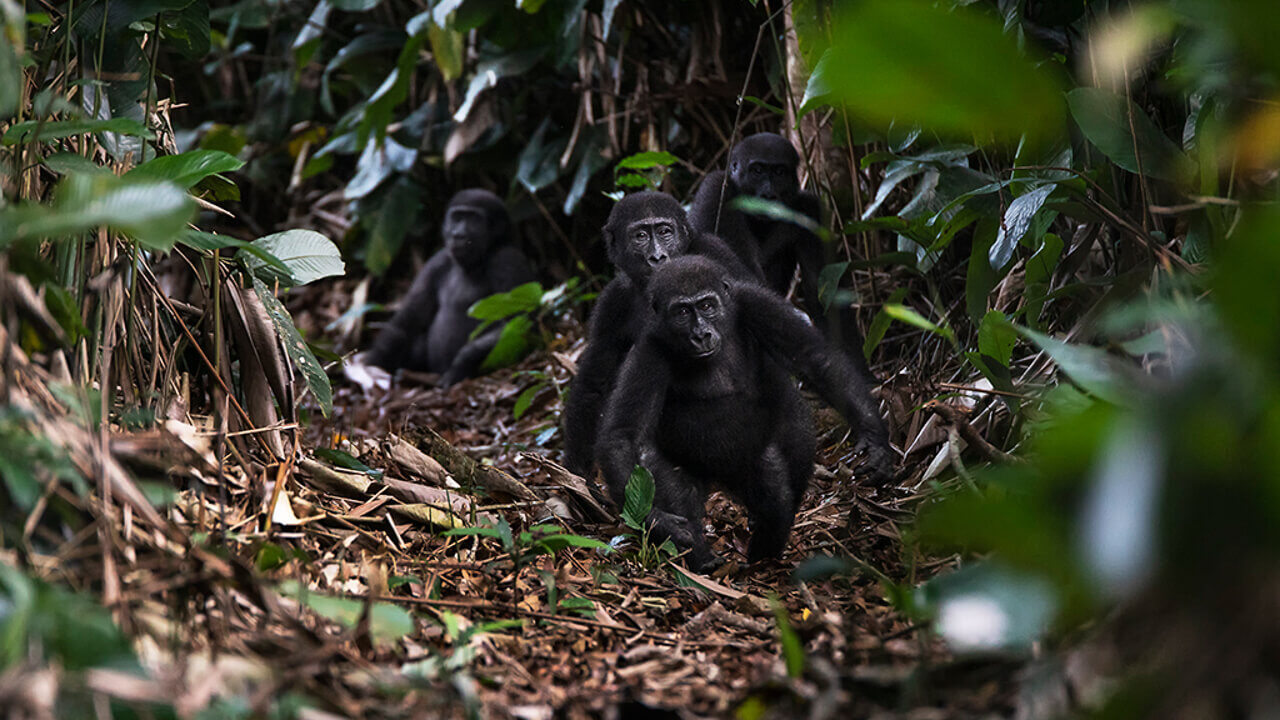
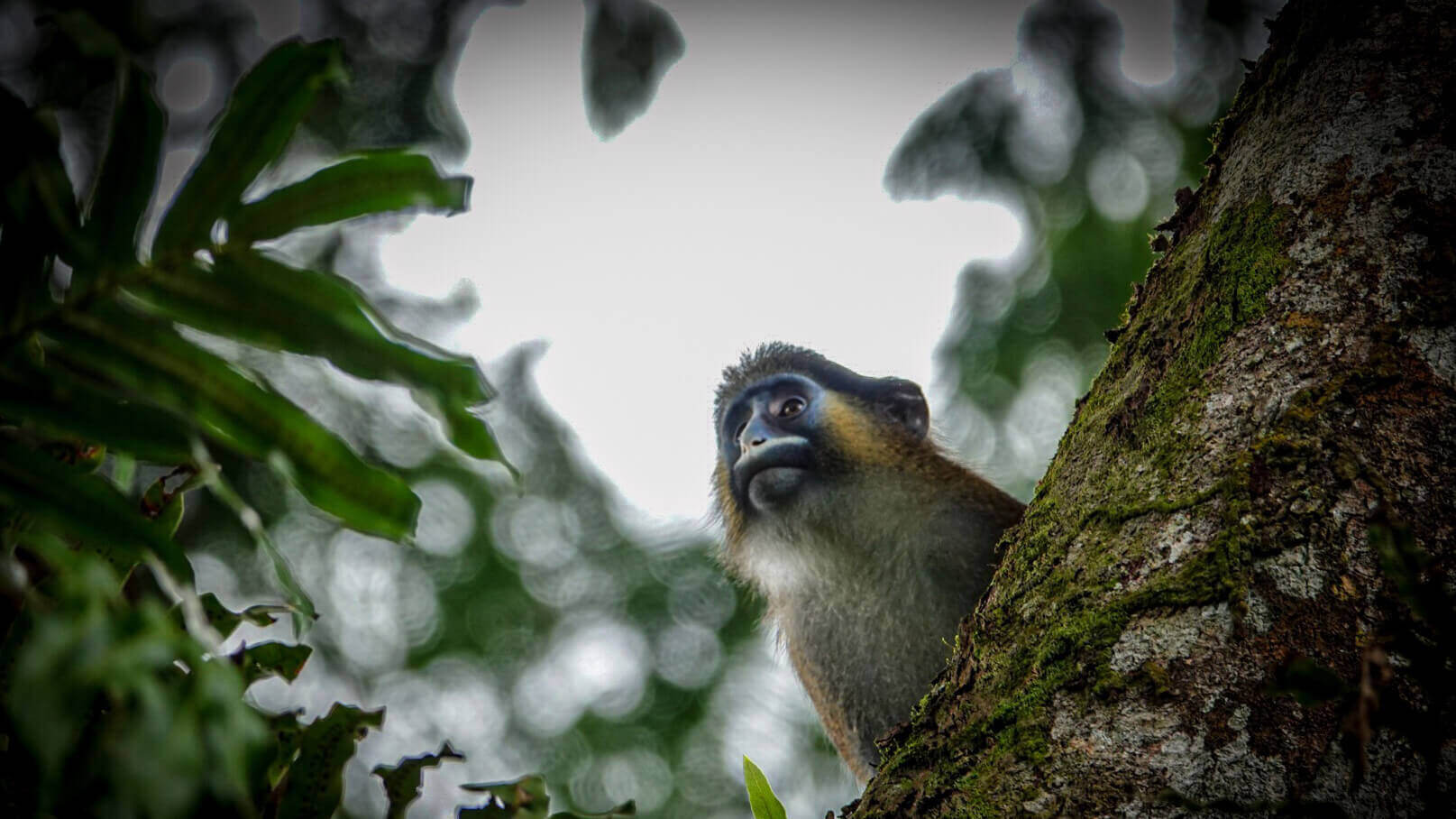
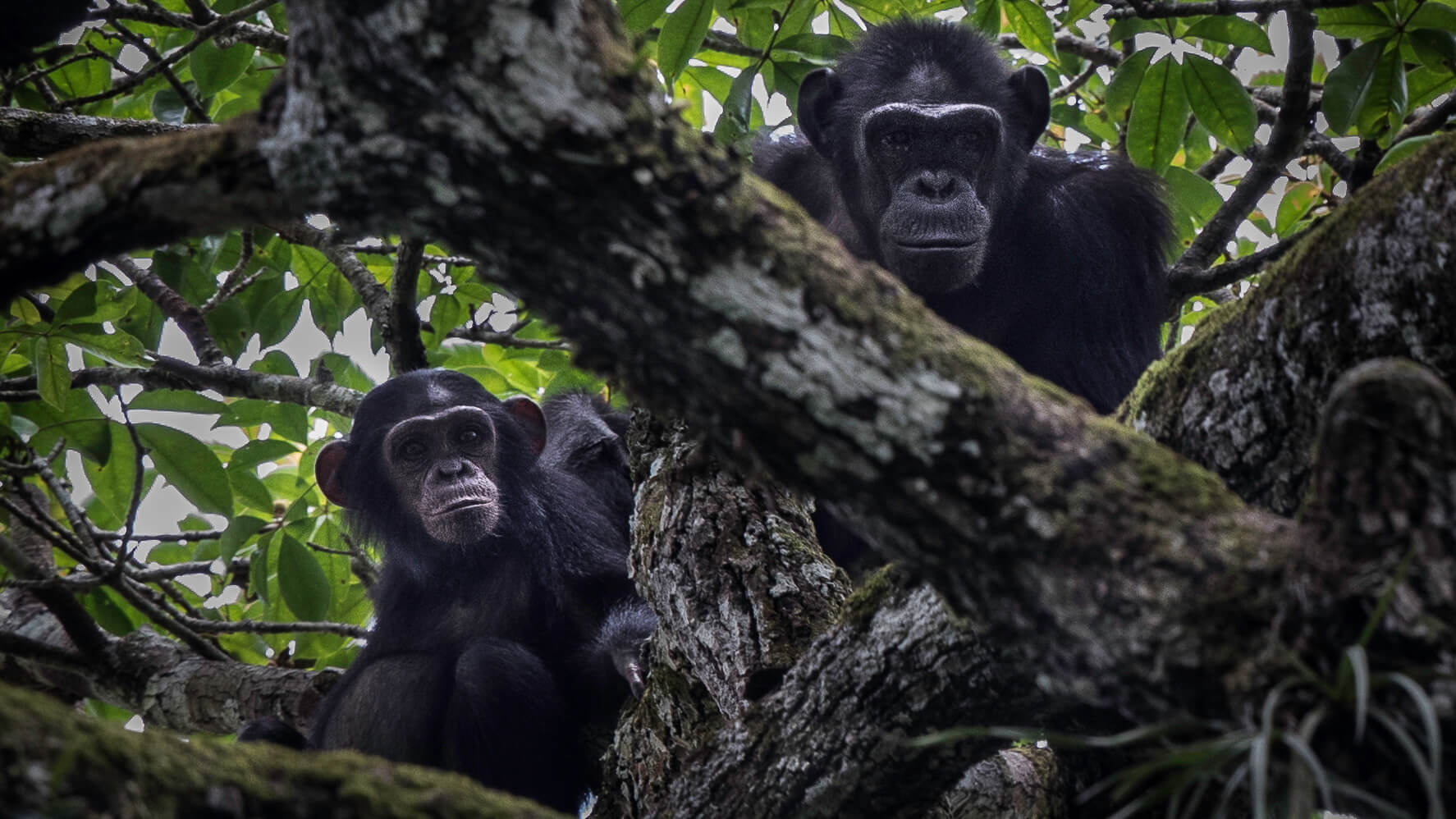
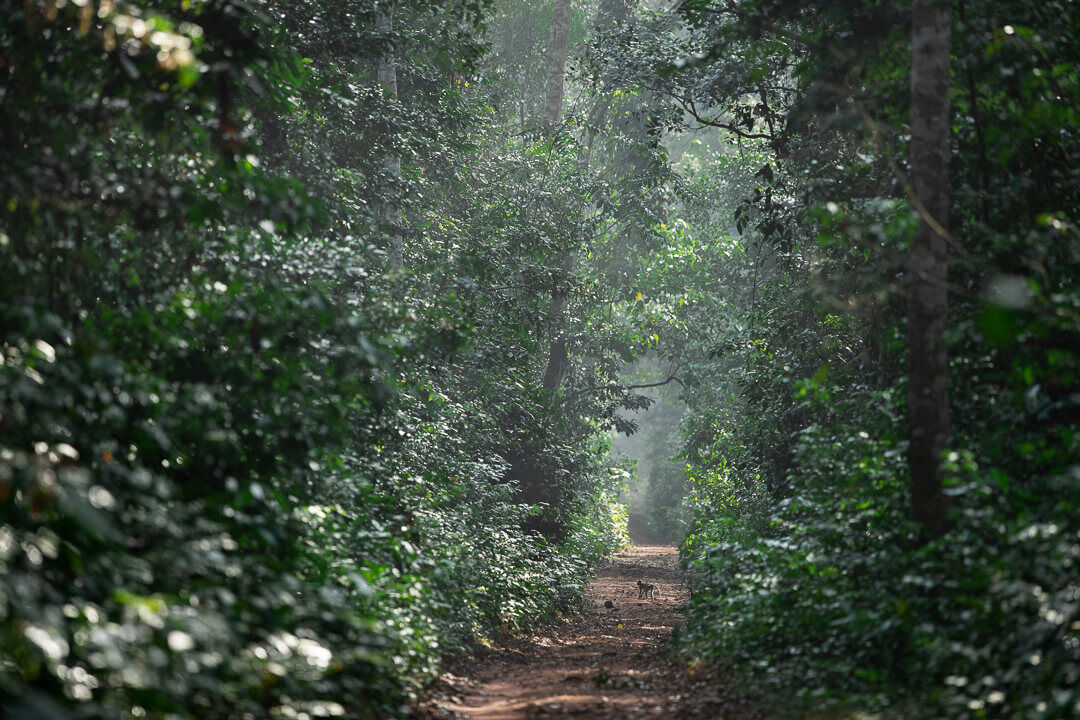
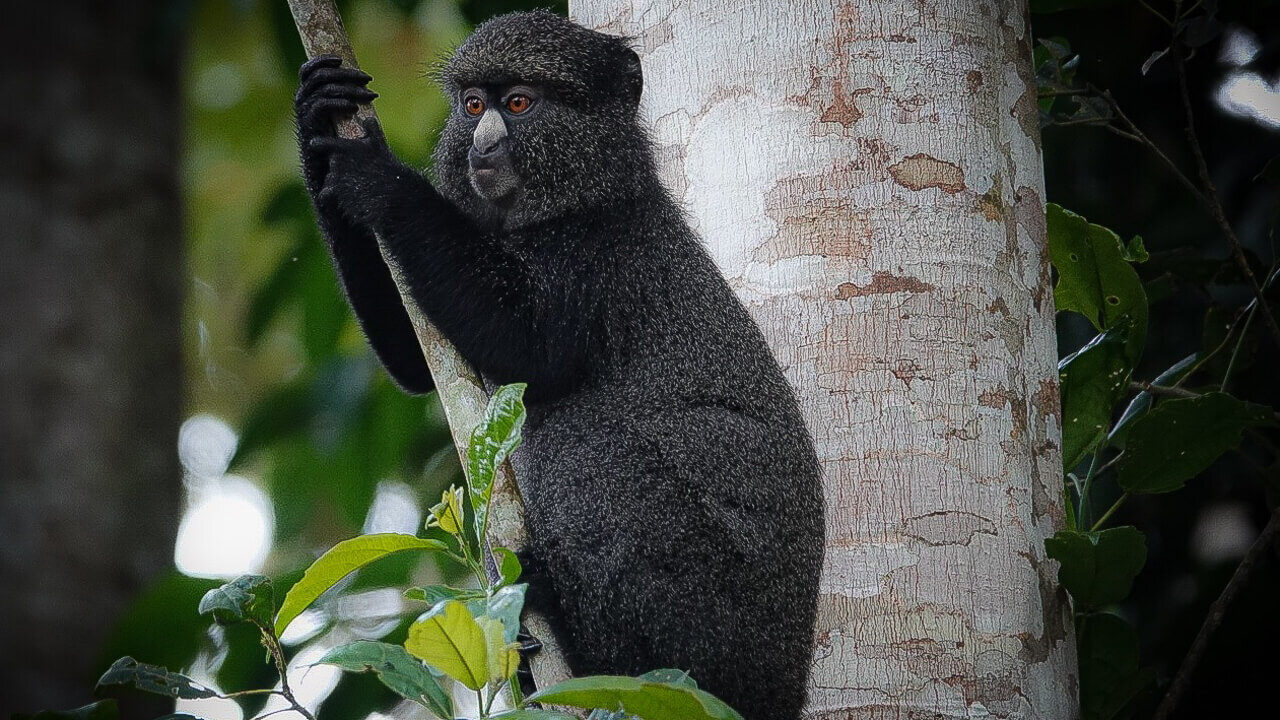
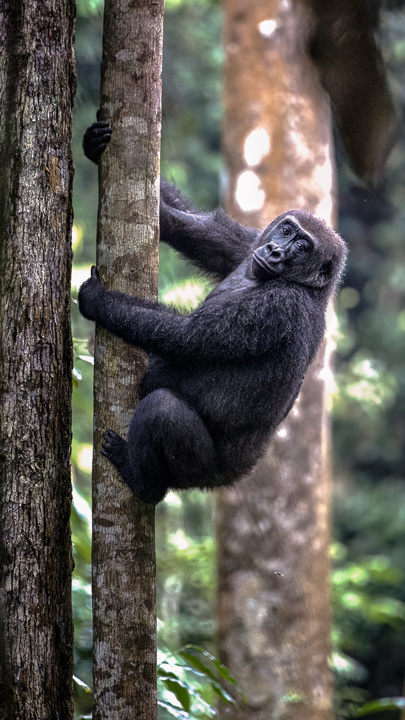
Importance of Marantaceae Forests
Marantaceae forests, with their open canopy and abundant food resources, are crucial habitats for several primate species in Odzala-Kokoua National Park. Western Lowland Gorillas and Chimpanzees are particularly dependent on these forests for nesting and foraging. The Crowned Monkey also prefers this habitat. Preserving Marantaceae forests is essential for maintaining the park's primate diversity.
Ecological Roles
These primates play integral roles in the park's ecosystem, contributing to seed dispersal, insect control, and forest regeneration. Their activities ensure the continued vitality of the forest, making them indispensable to the park's natural processes.
Visitor Experience
Visitors to Odzala-Kokoua National Park have the opportunity to observe and learn about these intriguing and captivating animals while exploring the park's pristine wilderness. This experience provides not only potential wildlife sightings but also a deeper understanding of the interconnectedness of nature.
Conservation Efforts
The park’s strong commitment to conservation ensures the protection and sustainability of these species, allowing them to thrive and be studied for generations to come. Odzala has the highest recorded densities of Western Lowland Gorillas (5.4 individuals per square kilometer) and Chimpanzees (2.2 individuals per square kilometer) in Central Africa. The high densities of gorillas and chimpanzees may be a result of the high productivity of the forest and low poaching pressure.
Did You Know?
Despite facing significant challenges, including an Ebola outbreak between 2002 and 2004 that severely impacted gorilla populations, the park has made remarkable strides in conservation. Over 5,500 gorillas were lost during this time, but ongoing efforts have helped stabilize and rebuild these populations. Today, visitors can witness the resilience and recovery of these incredible animals firsthand.
Conservation Plans for Western Lowland Gorillas
To gain comprehensive insights into the various aspects of conservation efforts for Western Lowland Gorillas, refer to the following action plans from renowned organizations. Each link provides a unique perspective and specific strategies.
WWF Action Plan for Western Great Apes (2015-2025), focuses on habitat protection, anti-poaching measures, and sustainable land use.
IUCN Regional Action Plan for the Conservation of Western Lowland Gorillas and Central Chimpanzees (2015-2025), emphasizes cross-border collaboration and detailed regional action plans.
For comprehensive information on the impact of Ebola on gorillas, you can refer to the following sources:
PLOS ONE: How Ebola Impacts Genetics of Western Lowland Gorilla Populations
WWF Ebola Vaccination Initiative for Gorillas

De Brazza's Monkey
We love teaching you about the magic of Odzala-Kokoua National Park.
If you have any further questions, please visit our comprehensive FAQ section.